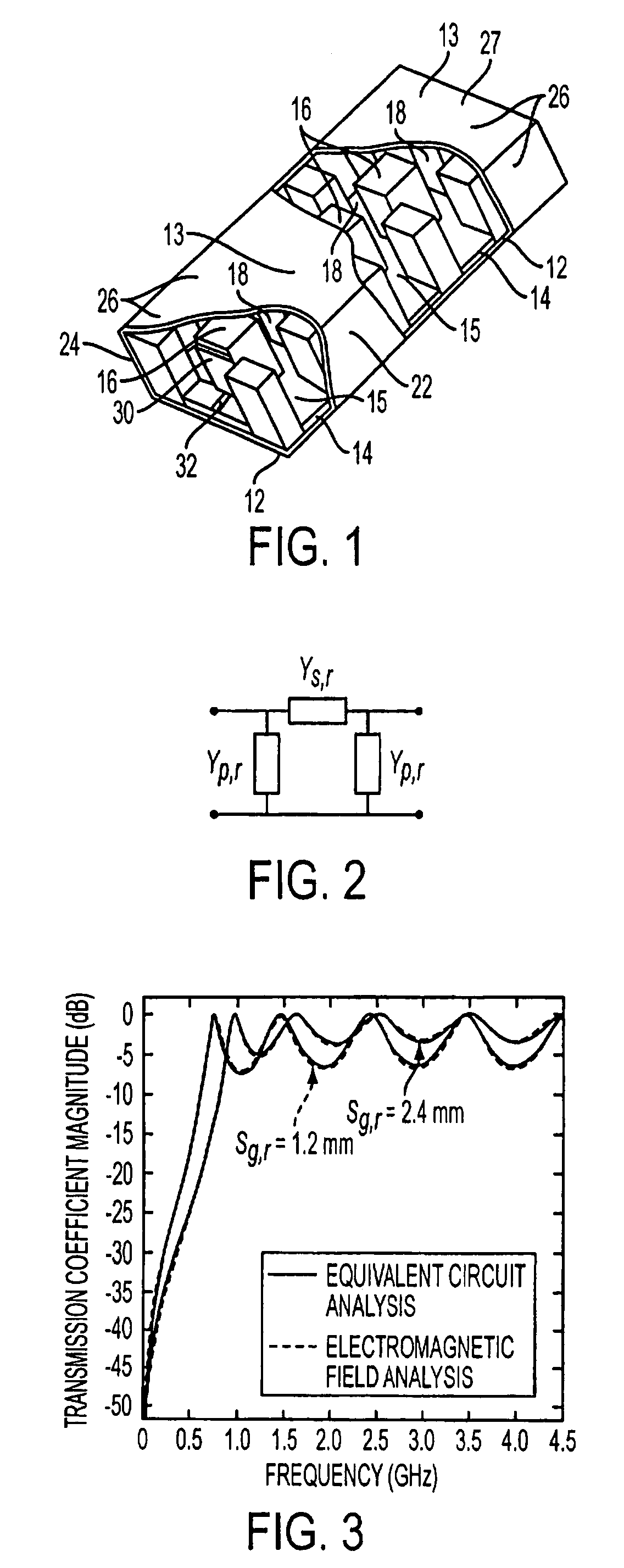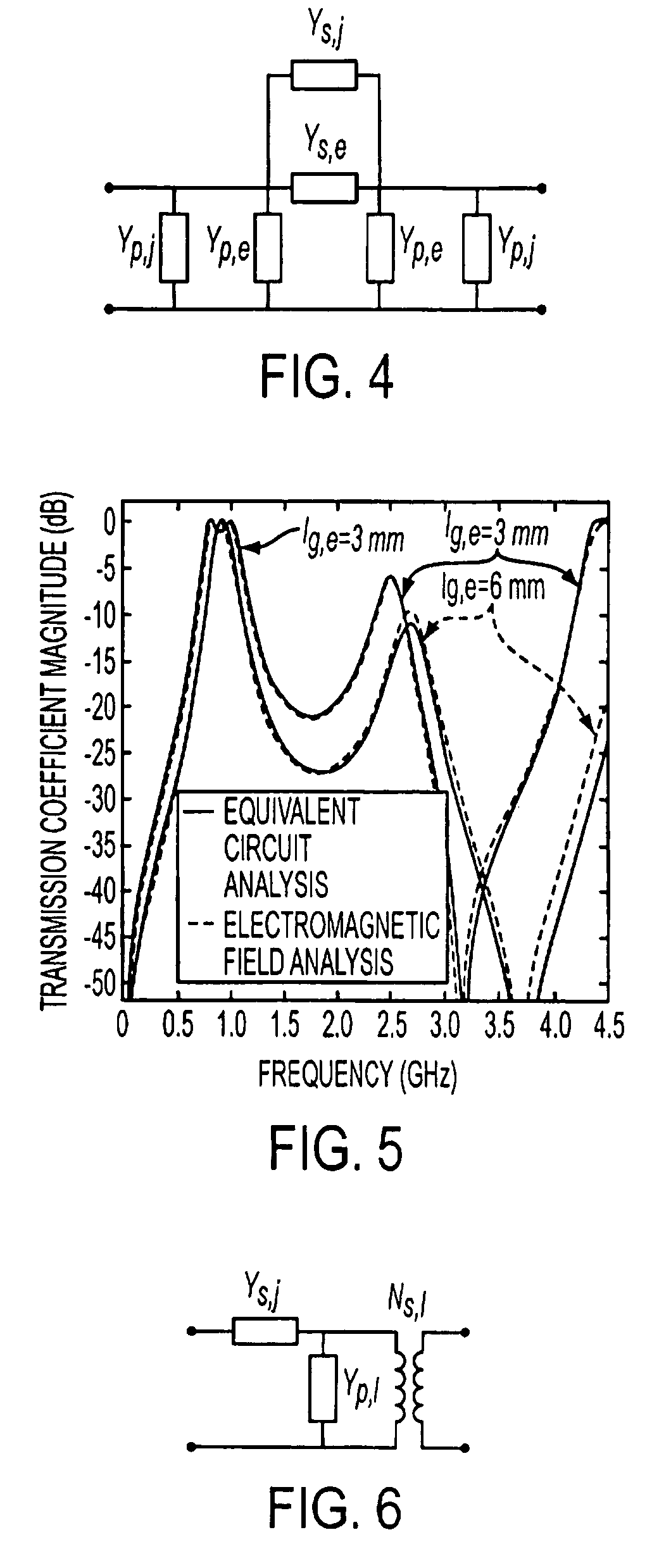Ridge-waveguide filter and filter bank
a waveguide filter and filter bank technology, applied in the direction of waveguides, electrical devices, coupling devices, etc., can solve the problems of compromising frequency selectivity, unduly increasing passband insertion loss, and thermal constraints may add to design challenges, so as to reduce physical size
- Summary
- Abstract
- Description
- Claims
- Application Information
AI Technical Summary
Benefits of technology
Problems solved by technology
Method used
Image
Examples
experiment b
[0110
[0111]The technique is further demonstrated with a second experimental five-pole bandpass filter that exhibits a 6-8.6-GHz passband width and is configured according to the same generic block diagram of FIG. 8 as in Experiment A. The cross-sectional views of filter 100 are represented in FIG. 12, where the structural components are the same as illustrated in FIG. 1 and FIG. 10 save for microstrip port matching circuits 34 replacing former series capacitors 30 and microstrip feeder lines 32, and a solid dielectric core of one material replacing former dielectric layers 14 and 15 of differing materials. Referring to FIG. 12, as above, ag,r, ag,e, and bg,r represent ridge-waveguide width, evanescent-mode-waveguide width, and common waveguide height, respectively, lg,r1, lg,r2, lg,r3, and lg,e12, lg,e23 denote respective ridge-waveguide and evanescent-mode-waveguide lengths, wg,r refers to ridge width, and sg,r to ridge gap spacing. The ratio of waveguide height bg,r to waveguide w...
PUM
 Login to View More
Login to View More Abstract
Description
Claims
Application Information
 Login to View More
Login to View More - R&D
- Intellectual Property
- Life Sciences
- Materials
- Tech Scout
- Unparalleled Data Quality
- Higher Quality Content
- 60% Fewer Hallucinations
Browse by: Latest US Patents, China's latest patents, Technical Efficacy Thesaurus, Application Domain, Technology Topic, Popular Technical Reports.
© 2025 PatSnap. All rights reserved.Legal|Privacy policy|Modern Slavery Act Transparency Statement|Sitemap|About US| Contact US: help@patsnap.com



